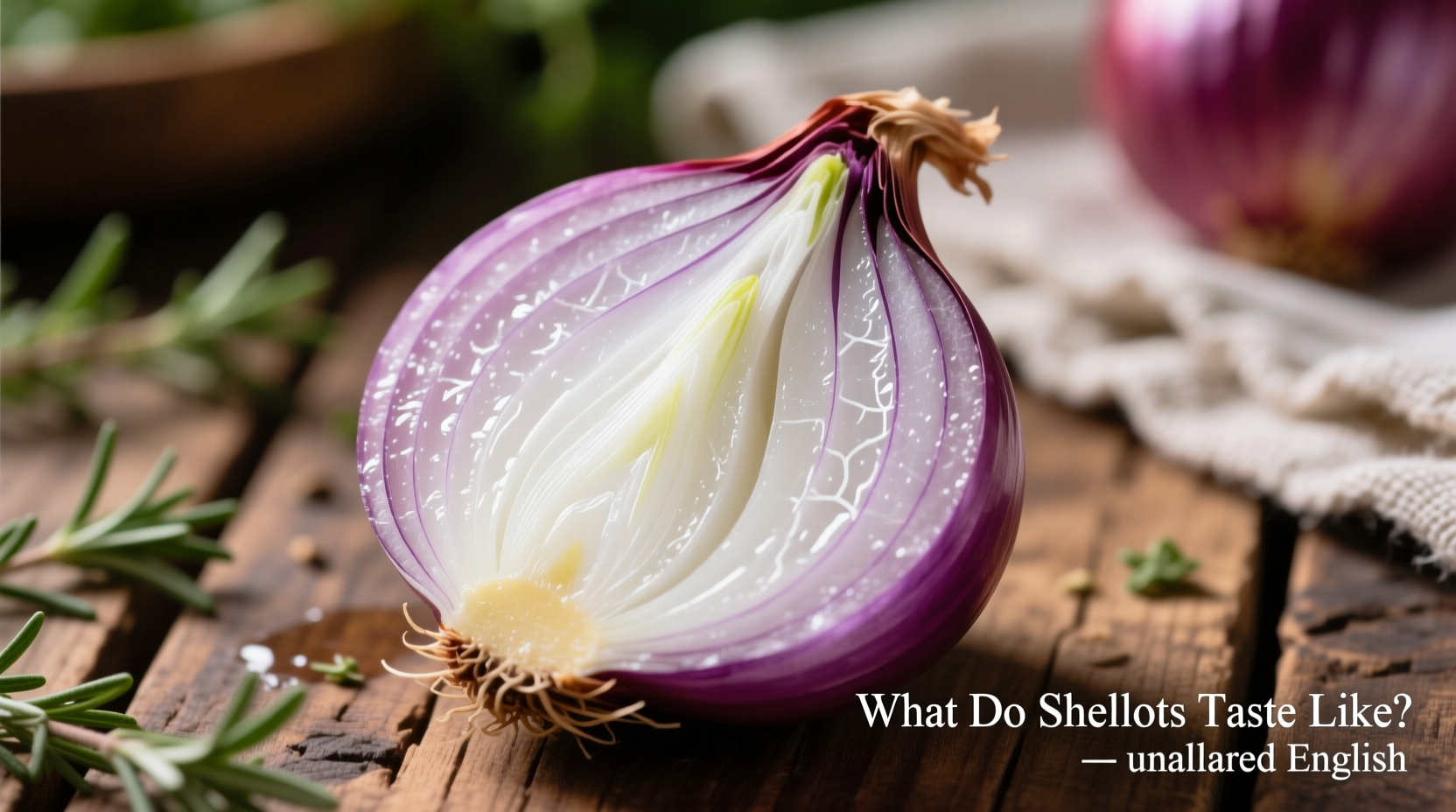The Complete Flavor Profile of Shallots: What Makes Them Special
Understanding what do shallots taste like requires examining their unique chemical composition. Unlike common onions, shallots contain higher concentrations of fructose and lower levels of sulfur compounds. This scientific difference creates their signature sweet yet sophisticated flavor that professional chefs rely on for nuanced dishes.
Raw Shallot Characteristics: A Sensory Breakdown
When tasted raw, shallots deliver a complex flavor experience:
- Mild heat – About 1/3 the pungency of yellow onions
- Distinct sweetness – Noticeable even when raw
- Garlic undertones – Subtle hints that differentiate them from onions
- Wine-like acidity – Adds brightness to vinaigrettes and salsas
- Long finish – Flavor develops rather than hitting all at once
This refined raw flavor makes shallots ideal for applications where onion would be too aggressive – think delicate salads, herbaceous sauces, and raw preparations where harsh allium notes would dominate.
Cooked Transformation: How Heat Changes Shallot Flavor
The real magic happens when you cook shallots. Understanding how do shallots taste when cooked reveals why chefs reach for them repeatedly:
| Cooking Method | Flavor Transformation | Best Culinary Uses |
|---|---|---|
| Sauteed (3-5 min) | Mellows sharpness, enhances sweetness | Pan sauces, omelets, stir-fries |
| Caramelized (25-30 min) | Deep umami, complex caramel notes | Onion tarts, meat toppings, cheese pairings |
| Roasted whole | Creamy texture, mild garlic essence | Side dishes, salad toppings, cheese boards |
| Raw in dressings | Bright acidity without harsh bite | Vinaigrettes, marinades, finishing sauces |
Unlike yellow onions that can turn bitter when caramelized, shallots develop beautifully balanced sweetness due to their higher sugar content and lower pyruvic acid levels – a fact verified by the USDA's Agricultural Research Service in their Allium Crop Database.

Shallots vs. Onions: The Critical Flavor Differences
Many home cooks wonder what do shallots taste like compared to onions. The differences are significant:
- Shallots: 5-7% sugar content, delicate flavor, subtle garlic notes, complex finish
- Yellow onions: 3-5% sugar content, pronounced sulfur notes, straightforward sharpness
- Red onions: 4-6% sugar content, vibrant color but more acidic bite
- Green onions: Minimal sugar, primarily grassy allium flavor
These differences explain why French chefs traditionally use shallots in sauces – their flavor integrates seamlessly without dominating other ingredients. As documented in the Encyclopedia Britannica's culinary section, shallots have been preferred in European fine dining since the 17th century for precisely this reason.
When to Use Shallots: Practical Culinary Guidance
Knowing what do shallots taste like helps determine optimal usage. They excel in applications where:
- You need onion flavor without overwhelming sharpness
- Creating emulsified sauces (beurre blanc, hollandaise)
- Making delicate vinaigrettes that won't overpower greens
- Preparing dishes where subtle garlic notes enhance without dominating
- Crafting recipes requiring complex sweetness without added sugar
Conversely, avoid shallots when you need pronounced onion flavor – think onion rings or French onion soup where yellow onions' robust character shines.
Selecting and Storing for Maximum Flavor
For the best what do shallots taste like experience:
- Choose firm bulbs with dry, papery skin – avoid soft spots or sprouting
- Store in cool, dark place (not refrigerator) for up to 30 days
- Use within 2 weeks of purchase for peak flavor intensity
- Peel carefully to preserve maximum flavor compounds near the skin
French gray shallots ("gris de Roscoff") offer the most complex flavor profile according to research from France's National Institute for Agricultural Research, though they're harder to find outside Europe.
Frequently Asked Questions
Can I substitute onions for shallots in recipes?
Yes, but with adjustments. Use 1/2 cup diced yellow onion for every 1 whole shallot, and add 1/4 teaspoon sugar to approximate shallots' sweetness. For raw applications like vinaigrettes, soak onions in cold water for 10 minutes to reduce harshness.
Why do chefs prefer shallots over onions for sauces?
Shallots contain less sulfur and more sugar than yellow onions, creating a smoother flavor that integrates better without curdling dairy. Their finer texture also dissolves completely when cooked, leaving no fibrous remnants in delicate sauces.
Do different colored shallots taste different?
Yes. Gray shallots have the most complex, wine-like flavor. Red shallots offer brighter acidity, while common French shallots provide balanced sweetness. Asian shallots (smaller, more elongated) have stronger garlic notes. Choose based on your recipe's flavor needs.
How does cooking time affect shallot flavor?
Short cooking (3-5 minutes) preserves subtle sharpness ideal for pan sauces. Medium cooking (10-15 minutes) develops balanced sweetness for stir-fries. Extended caramelization (25+ minutes) creates deep umami notes perfect for tarts and meat toppings. Unlike onions, shallots rarely turn bitter when properly caramelized.











 浙公网安备
33010002000092号
浙公网安备
33010002000092号 浙B2-20120091-4
浙B2-20120091-4